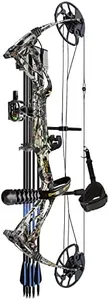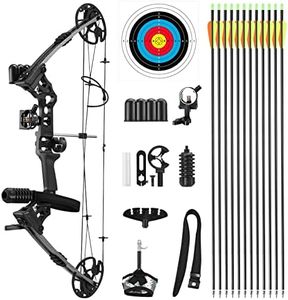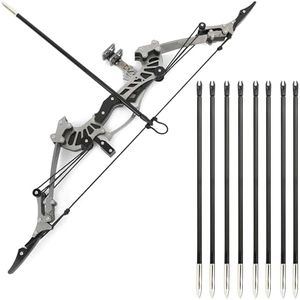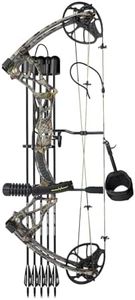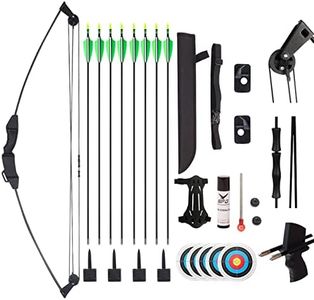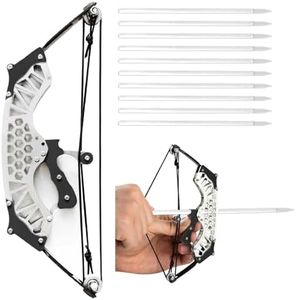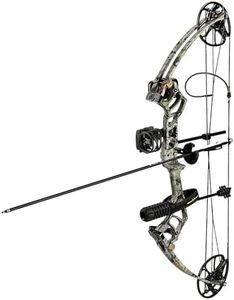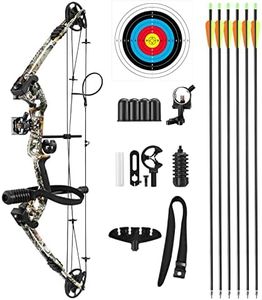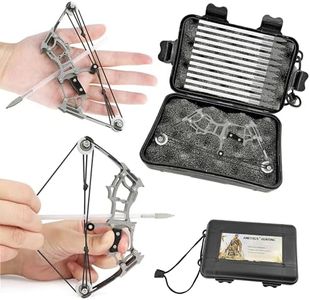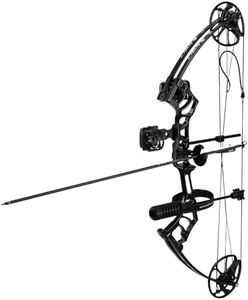We Use CookiesWe use cookies to enhance the security, performance,
functionality and for analytical and promotional activities. By continuing to browse this site you
are agreeing to our privacy policy
10 Best Archery Compound Bows
From leading brands and best sellers available on the web.Buying Guide for the Best Archery Compound Bows
Choosing the right compound bow is essential for both beginners and experienced archers. The best bow for you will be one that matches your body size, strength, and intended use, whether you're targeting archery, hunting, or competition. Understanding key specifications will help ensure comfort, safety, and enjoyment in your shooting experience. Take your time to test different bows if possible, paying attention to how each spec affects your shot.Draw WeightDraw weight refers to the amount of force required to pull the bow string to its full draw. It is important because it affects both the speed of your arrow and how comfortable the bow feels while shooting. Lighter draw weights (typically 15-40 lbs) are better for young archers and beginners, making it easier to learn good form. Mid-range weights (40-60 lbs) are suitable for most adults for general archery and some types of hunting. Higher draw weights (60 lbs and above) are typically chosen by experienced archers and hunters who need more stopping power. The best draw weight for you is one you can pull back smoothly and hold comfortably without strain.
Draw LengthDraw length is how far you can pull the string back before it stops. This spec is crucial because using the right draw length ensures comfort, proper form, and accuracy. A draw length that is too long or too short can cause inaccuracy and discomfort. Smaller framed individuals generally have shorter draw lengths, while taller people have longer draw lengths. Many compound bows offer adjustable draw lengths, which is useful for getting a custom fit. Make sure to measure your ideal draw length or have it professionally evaluated before choosing a bow.
Axle-to-Axle LengthAxle-to-axle length is the measurement between the bow’s cams (where the strings are wound). It determines the overall size and maneuverability of the bow. Shorter axle-to-axle bows (26-32 inches) are more compact, making them easier for hunting in tight spaces but sometimes less forgiving for beginners. Longer bows (33-38 inches) tend to be more stable and accurate, which many target shooters prefer. Choose a length that matches how and where you’ll use the bow, as well as your comfort level handling it.
Let-OffLet-off is a unique feature of compound bows, describing the percentage of draw weight reduced when the bow is fully drawn. Higher let-off (70-90%) means you hold less weight when aiming, reducing fatigue and allowing better accuracy during longer aiming. Lower let-off (65% or less) means you hold more weight, which some archers prefer for a quicker, more powerful release. If you plan to aim for long periods, higher let-off will offer more comfort.
Brace HeightBrace height is the distance from the bow’s grip to the string at rest. This affects the speed of your arrow and how forgiving the bow is of shooting mistakes. Shorter brace heights (less than 7 inches) produce faster arrow speeds but require more precise form. Longer brace heights (7 inches or more) are more forgiving and great for beginners. Pick a brace height according to your experience level and desired balance between speed and ease of use.
Bow WeightBow weight is simply how heavy the bow is when you hold it. Lighter bows are easier to carry, especially if you’re hunting or hiking long distances. Heavier bows can feel steadier and reduce hand movement during aiming, which many target shooters prefer. Consider whether you need to carry the bow for extended periods or if you primarily want maximum stability for stationary shooting.
